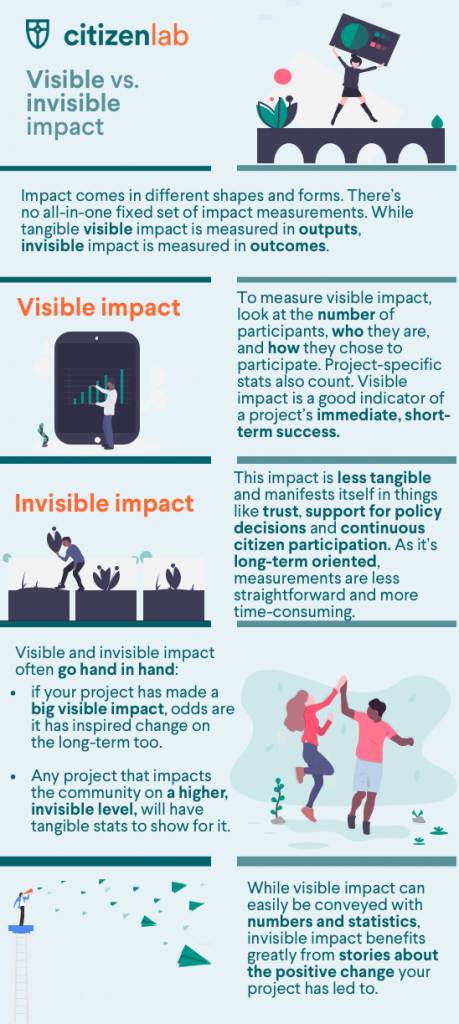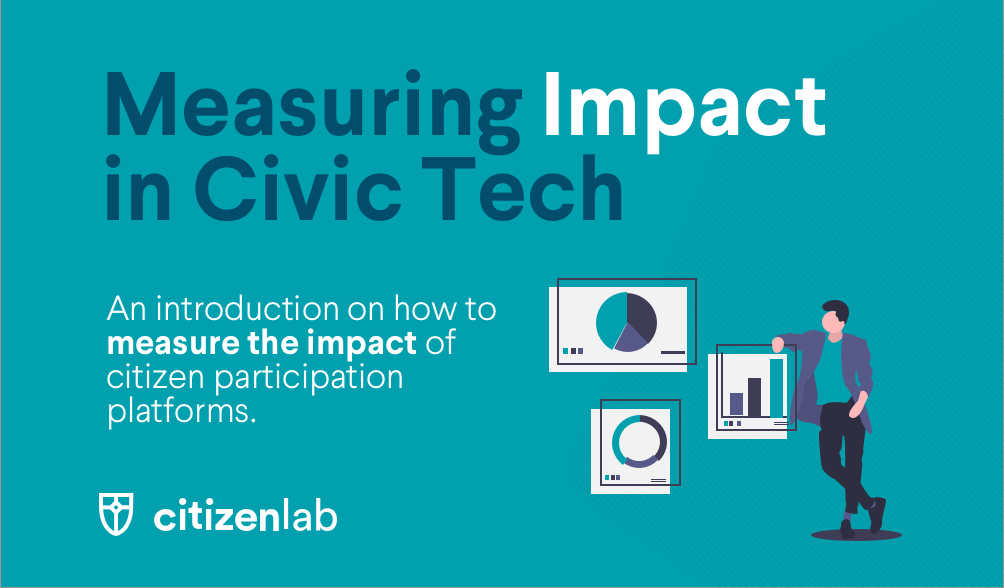Even though it is widely accepted that digital participation is beneficial for citizens and governments alike, measuring the impact of civic tech projects is still a challenge for many local governments.
Citizen participation platforms usually aim to improve intangible metrics, such as trust or levels of citizen engagement. Measuring such intangible metrics and clearly demonstrating impact is a difficult process, and is therefore often overlooked. However, this is an essential step: it helps to adjust strategies, improve tools and above all to demonstrate the benefits of citizen participation. Here are some key practical guidelines to evaluate the impact of a citizen participation project!
This blog post is an excerpt from our guide “How to Measure Impact in Civic Tech”, which you can download here.
1. Define your focus
Define your definition of success. It may seem obvious, but it’s key to realize that impact cannot mean the same thing for every city, project or platform. When establishing your goals, remain realistic and focus on outcomes that your platform is designed to produce. By concentrating on those results, rather than on broad objectives, you can get the most out of your efforts.
2. Be transparent in data collection
When collecting data from citizens, always ask yourself: “do I have everything I need, do I need everything I have?” It can be tempting to grab as much data as you can via your platform, but you should avoid collecting data that cannot be justified. Even besides all the ethical arguments, requesting a lot of personal information combined with unclear intentions may result in a high drop-off percentage during registrations.
3. Don’t assume high numbers = high impact
High numbers can mean high impact, but it doesn’t have to be the case. It’s easy to trace where this assumption is coming from: when we talk about measurements, we think of numbers. We should understand, however, that measuring civic engagement is about much more than measuring clicks. If we only rely on descriptive data, we may fail to capture the “civic” in Civic Tech.
4. Differentiate between Visible & Invisible impact
Invisible impact encapsulates larger goals that your participation platform is working towards. So instead of outputs, you look at outcomes. These measurements are less tangible and often long-term oriented, yet, they can still be assessed by translating them into metrics. For instance, to measure continuous citizen involvement, you could evaluate if there has been an increase in the number of Citizen Initiatives launched.

5. Share stories!
We all like to showcase the success of our platforms during our next meeting on participation. Statistics can help in that regard, but stories are just as impactful – if not more. Telling the story of how your platform (or a project resulting from it) has been making a change can illustrate the social impact that Civic Tech achieves. Moreover, sharing these stories can result in a ripple effect: citizens get excited about their voices being heard, public officials learn to invest in public participation, and so on. Frankly, if you want to fuel the ongoing rise of Civic Tech, the best you can do is tell clear and honest stories about its impact.
Ready to go?
Did these insights spark your curiosity and make you eager to get started yourself? Our brand new guide on How to Measure Impact in Civic Tech outlines more details on why measuring impact matters, the main challenges – and how to tackle them, as well as how to measure the impact of your citizen participation platform!







